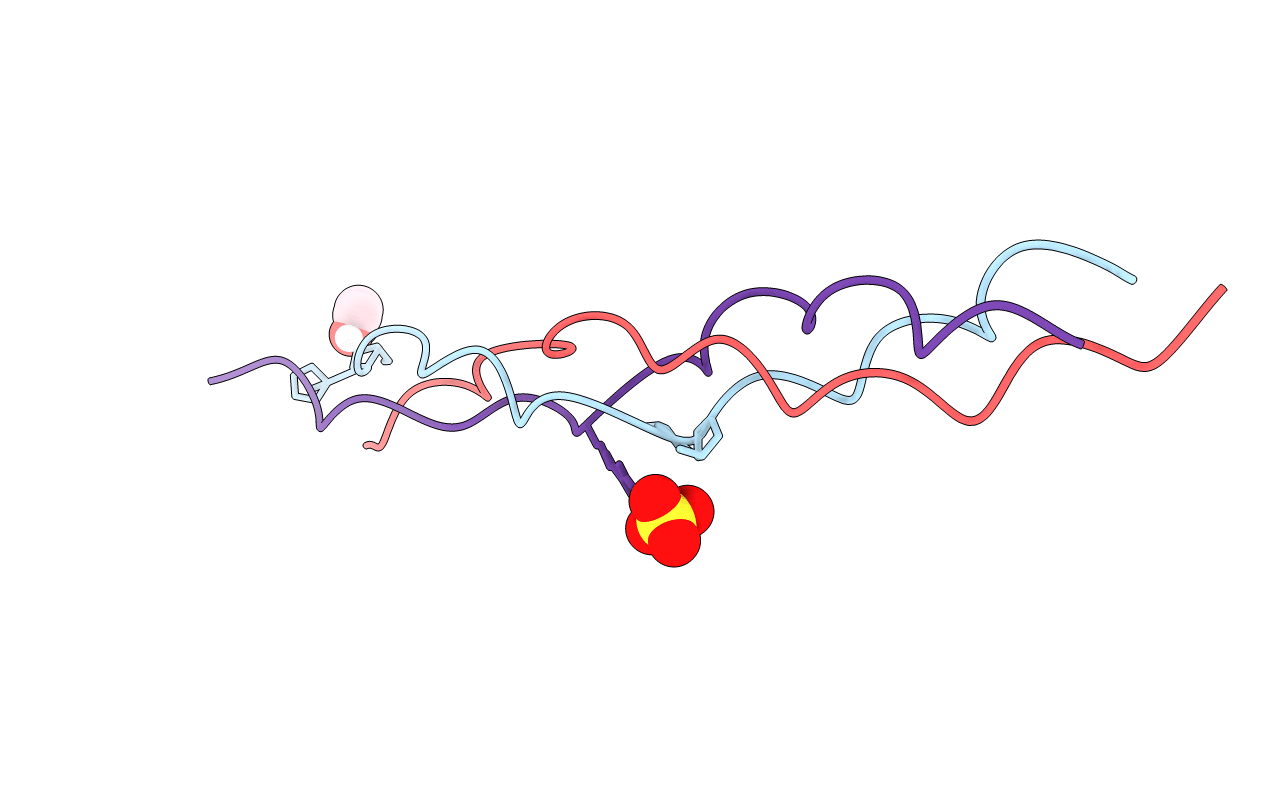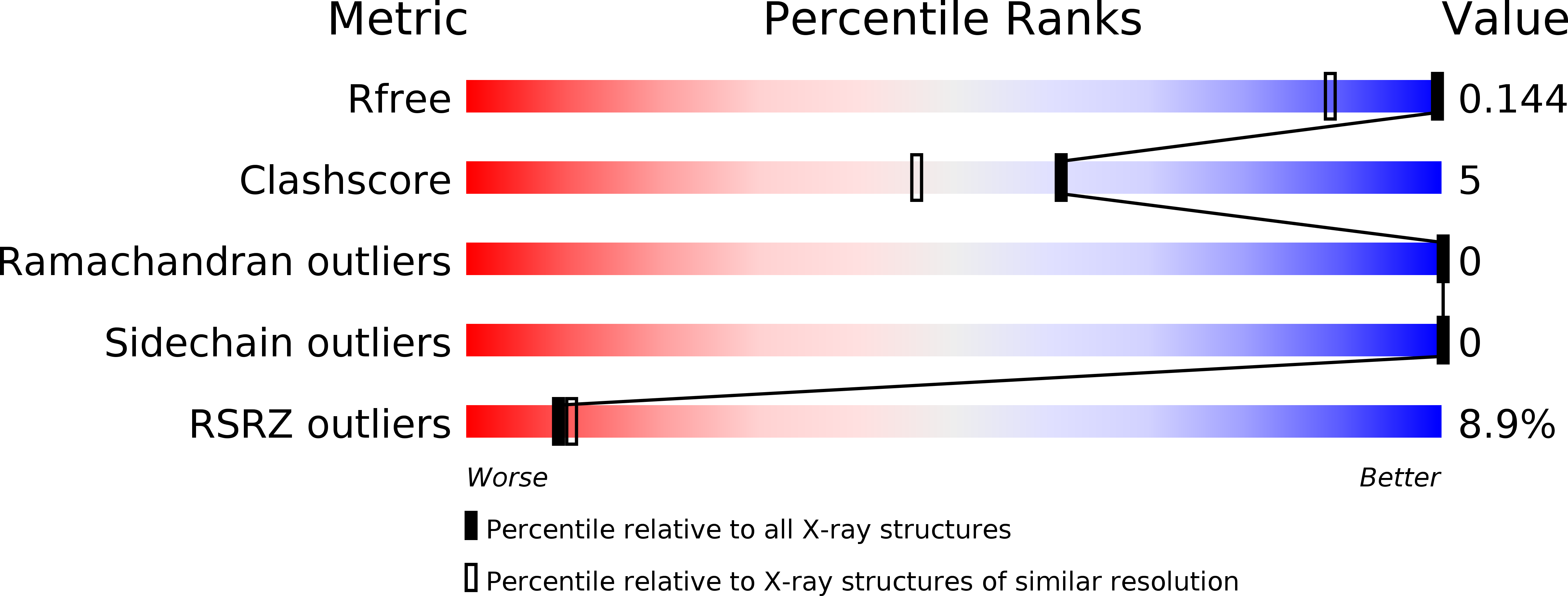
Deposition Date
2018-08-21
Release Date
2019-07-03
Last Version Date
2023-11-15
Entry Detail
PDB ID:
6M80
Keywords:
Title:
Collagen peptide containing aza-proline and aza-glycine
Biological Source:
Source Organism:
Homo sapiens (Taxon ID: 9606)
Method Details:
Experimental Method:
Resolution:
1.10 Å
R-Value Free:
0.14
R-Value Work:
0.11
R-Value Observed:
0.11
Space Group:
P 1 21 1


